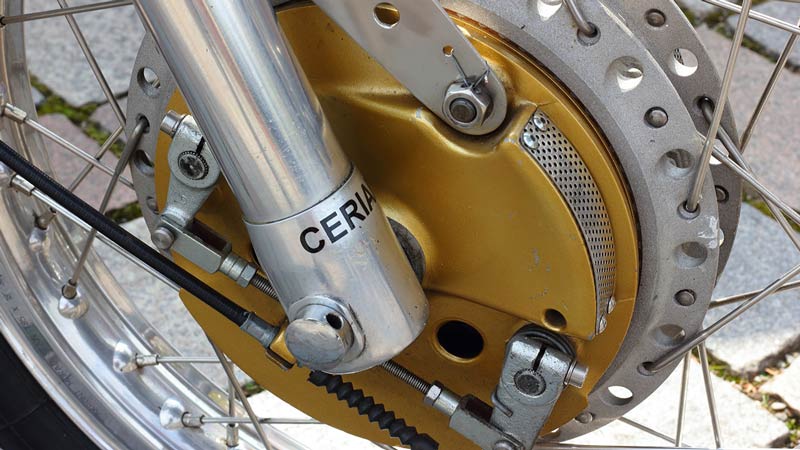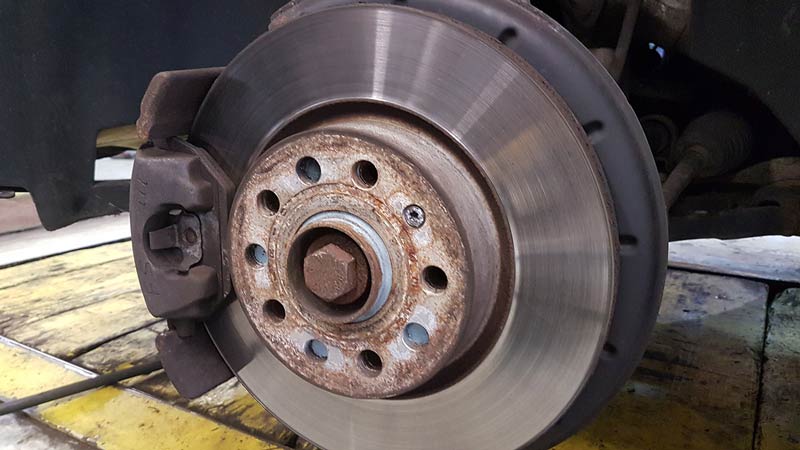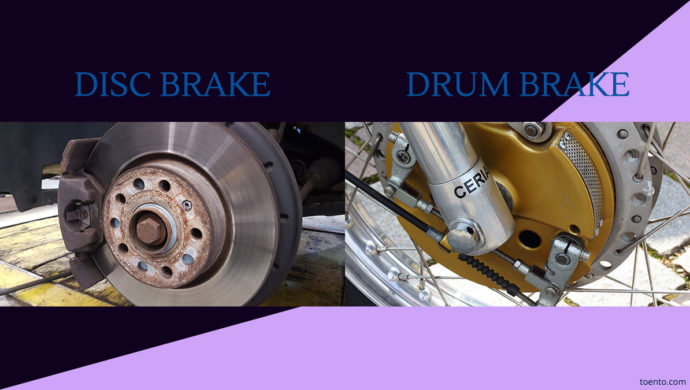Technology has come a long way since the making of the early two-wheeler and four-wheeler vehicles, motorbikes and cars; these days have become sophisticated and ultra-modern in their design, engines, suspension technologies, fuel systems and even brakes. The brakes have been augmented with carbon fibre, lightweight steel that has made stopping the cars easy and safe. Disc brakes and Drum brakes have been used in automobiles for many years now. Both of these braking systems have their positives and negatives.
Let us find the characteristics of both the brakes and then compare to know which one is better. But before delving deep into it, let us shed some light on the principle behind the brakes: Resistance or Friction and Heat.
The principle used in Brakes: Friction and Heat
The brakes are applied in a vehicle through the addition of resistance to cause friction which slows down the wheels of the vehicles and ultimately halts the movement. In this process, heat is produced as a byproduct. Several factors like vehicle weights, surface area and force related to braking dictate the rate of the slowdown of the wheels. Besides, the efficiency of the brake system also depends on how well the wheel movement is converted into heat and how fast the heat produced is removed from the brake components. This is where the significance of Drum brakes and Disc brakes comes into play.

Drum Brakes
Drum brakes were used for the first time in the year 1900. It was fitted in a Maybach and patented by Louis Renault, a prominent automobile engineer of the twentieth century, two years later. These brakes are the original barking system that operates in-tire. Before their introduction, hand brakes were used where a block of wood on a lever was pressed against the tire. The drum brakes are named as such due to their drum-like design on all four wheels. The components in these brakes are housed within a round drum rotating along with the wheel. There are a set of shoes inside which would move against the drum to slow the wheel when the brake pedal is pressed. The shoes are made up of heat resistant material, just like the clutch plates are made of. Fluid transfers the movement of brake pedals into that of the brake shoes.
The drum brakes were efficient under most circumstances but had one defect. In conditions where the vehicle has to descend downhill with a heavy load or repeated speedy slowdowns, drum brakes would fade. Under these high braking conditions, the effectiveness of these brakes significantly reduce. The ineffectiveness may be attributed to the excessive heat build-up within the drum. Since the brake components heat up to saturation, their ability to halt the vehicle is reduced. This may become a cause for concern for the vehicle’s driver. (More on Wikipedia)
Advantages of Drum Brakes:
- Drum brakes are affordable since the parts making up them are cheap and readily available.
- These brakes are easier to lose as they require less force for their application.
- The wheel cylinders on drum brakes can be reconditioned more easily than that of the Disc brakes.
- The drum brakes can contain the parking brakes without any extra space being used.
Disadvantages of Drum Brakes:
- Due to excessive heating, the drum brakes suffer wear and tear very fast. Therefore, the components do not have a long life.
- Since the heat is not easily dissipated in drum brakes, therefore they suffer expansion in the metallic parts.
- Since these brakes are closed, they tend to suffer through rusting or reduced piston performance.
- Since these brakes contain many parts, the chances of failure due to some issues in one or the other part is quite high.

Disc Brakes
The disk brakes have a more sophisticated design than drum brakes since they use a small calliper and slim rotor to halt the wheel. There are two brake pads within the callipers, one on each side of the rotor that clamps together when the brakes are applied. The movement of the brake pedal is transferred to the brake pads with the help of fluid.
The disc brakes do not suffer from one of the major flaws of drum brakes, that is, excessive heating during heavy braking conditions. In disc brakes, the rotor is exposed to the ambient air. The ambient air from outside cools the rotor and prevents its excessive heating. This was first observed on racing tracks which showed the advantage of disc brakes over drum brakes. Since then, disc brakes have been increasingly used in automobiles. (More on Wikipedia)
Advantages of Disc Brakes:
- Disc brakes have impressive braking power that can be used to apply brakes even in large and heavy vehicles with great ease.
- They have a good heat dissipation system since the rotor is exposed to the outside air, which prevents overheating.
- Disc Brakes are open; therefore, they do not retain any unwanted material. They do not undergo rusting or performance degradation.
- Earlier, the disk brakes used to lock up during high-speed braking. However, now they use ABS (Anti Lock Braking System), which makes it more reliable to use in vehicles.
Disadvantages of Disc Brakes:
- The installation of disc brakes costs more than the drum brakes.
- If even slight air enters the master cylinder of the disc brake, it may damage it and lead to serious accidents.
- The brake fluid tends to become less viscous over a short period and therefore needs to be changed frequently.
- Disc brakes without ABS may be prone to skidding and locking.
Do you know What is the Difference between Petrol and Diesel Engine?
Which one is better – Disc brake vs Drum brake?
In modern cars, the braking technology has been consistently improving, and hence the designs of drum brakes and disc brakes have evolved. In the medium-priced cars which have a non-performance orientation, a combination of drum and disc brakes are used. The drum brakes are used in the rear end, whereas the disc brakes are used in the front end since in stopping the car, the front end is excessively involved. Thus the combination of the disc brakes and drum brakes give a balance between affordability and safety.
In high-end sports cars, disc brakes are used in the front as well as back ends. This is because racing cars and sports cars have to go through heavy and frequent brakings, which may lead to wear and tear in drum brakes. Therefore, disc brakes are used due to their anti-lock Braking System and efficient heat dissipation.
Both the brakes have evolved designs and superior characteristics suitable for different vehicles.

